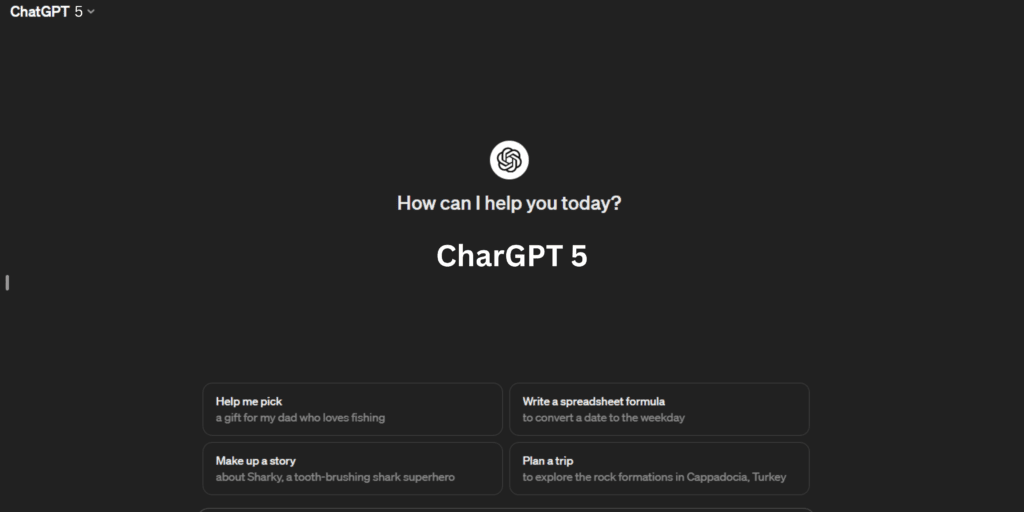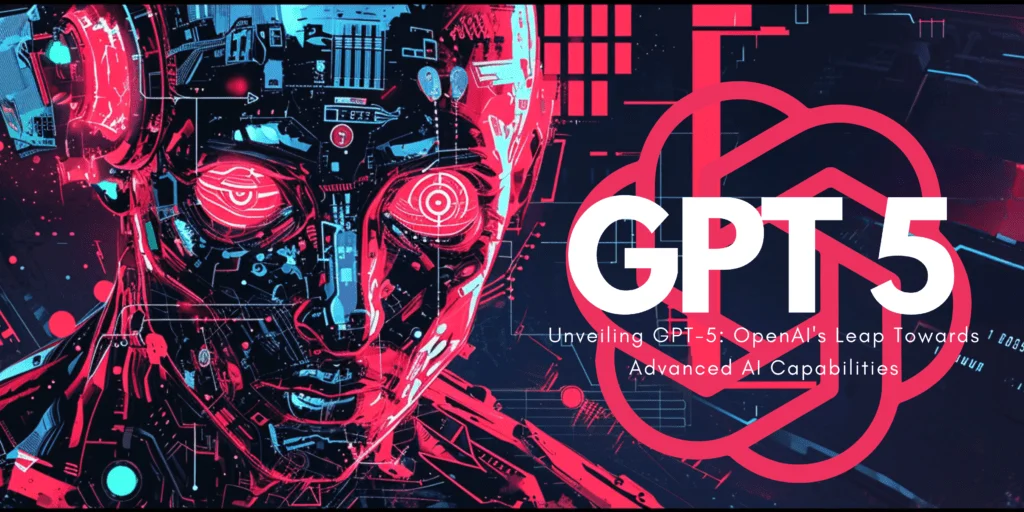Open AI stands at the forefront, embarking on an ambitious journey to replicate and surpass human intelligence. At the heart of this quest lies the development of GPT-5, the latest iteration in the transformative series of Generative Pre-trained Transformers.
This next-generation chatbot promises not just an incremental improvement over its predecessors but a leap towards realizing artificial general intelligence. In this future, machines think, learn, and create autonomously.
As detailed by Open Ai’s CEO, Sam Altman, at the World Governments Summit in Dubai, GPT-5 is not just another step but a significant stride in the AI landscape. With expectations of enhanced personalization, fewer errors, and an expanded realm of capabilities, including video content, GPT-5 is poised to redefine what AI can achieve.
This introduction to GPT-5 explores the potential of Open Ai’s most advanced chatbot yet, its role in the company’s mission for AGI, and the exciting possibilities it heralds for the future.
Evolution of ChatGPT
The journey of ChatGPT from its inception to the forthcoming GPT-5 represents a remarkable saga in the evolution of artificial intelligence. This progression not only showcases Open Ai’s commitment to advancing AI but also reflects the exponential growth in the capabilities of machine learning models.
The story begins with the first Generative Pre-trained Transformer introduced in June 2018. As a pioneering effort, GPT-1 laid the groundwork for what was possible with language models. It demonstrated the potential of transformers, a type of model architecture, for generating coherent and diverse text based on vast amounts of data.
February 2019 marked the arrival of GPT-2. With a significant increase in the model size and training data, GPT-2 showcased an unprecedented ability to generate coherent and contextually relevant text over longer passages. Its release sparked a debate about the ethical implications of such powerful language models, as its proficiency in mimicking human-like text raised concerns about potential misuse.
The release of GPT-3 in June 2020 was a watershed moment in the field of AI. With an architecture boasting 175 billion parameters, GPT-3 demonstrated a remarkable ability to understand and generate human-like text, perform translation, answer questions, and even write creative fiction.
Its release underlined the immense potential of large language models and their applicability across a range of tasks, from writing assistance to coding.
March 2023 saw the introduction of GPT-4, which not only expanded on the knowledge base up to April 2023 but also introduced improvements in understanding and generating images and speech. GPT-4 further honed the ability to follow instructions and handle complex queries, setting a new benchmark for AI chatbots in terms of versatility and depth of knowledge.
Now, with the anticipated release of GPT-5, OpenAI is poised to push the boundaries even further. Expected to offer better personalization, make fewer mistakes, and handle a broader array of content types.
GPT -5 aims to incorporate multimodal inputs and outputs, including the potential for video content. This iteration is not just an upgrade; it is envisioned as a significant leap towards achieving AGI with enhanced reasoning abilities and reliability.
The evolution of ChatGPT from GPT-1 to GPT-5 encapsulates the rapid advancements in AI technology and OpenAI’s relentless pursuit of creating models that more closely mimic human intelligence.
Each iteration has not only expanded the model’s capabilities but also its potential applications, paving the way for a future where AI can assist, enhance, and potentially transform various aspects of human life.

What Sets GPT-5 Apart
GPT-5 is expected to offer unprecedented levels of personalization. This means it can tailor its responses and interactions more closely to the individual user’s preferences, history, and context. Such personalization could revolutionize customer service, education, and personalized content creation, making interactions with AI more relevant and engaging than ever before.
One of the critical improvements with GPT-5 is its significantly reduced error rates. By refining its understanding of context and nuances in language, GPT-5 aims to provide more accurate and reliable outputs. This enhancement is crucial for applications requiring high levels of precision, such as technical writing, medical advice, and legal analysis.
GPT-5 broadens the scope of content types it can handle efficiently. Beyond text and images, GPT-5 is expected to eventually manage video content, offering a multimodal experience that could transform content creation, education, and entertainment. This capability would allow for more dynamic interactions, where users can receive AI-generated content in various formats, catering to a wider range of learning styles and preferences.
The introduction of multimodality in GPT-5—where the AI can process and generate not just text but also speech, images, and eventually video—marks a significant leap forward. This advancement opens up new avenues for AI applications, from interactive educational tools to more sophisticated digital assistants that can understand and respond to a broader range of human inputs.
GPT -5’s improved reasoning abilities mean it can understand and navigate complex problem-solving tasks better than its predecessors. Such capabilities are crucial for advancing AI’s role in research, analytics, and decision-making, where nuanced understanding and high-level reasoning are required.
GPT -5’s training process is another area where it sets itself apart. Utilizing more extensive and diverse datasets, including large-scale proprietary datasets from organizations, GPT-5 aims to understand and mimic human language and behaviour more closely than ever before. This comprehensive training approach enables the model to offer more nuanced and contextually appropriate responses across a broader spectrum of topics and scenarios.
Training GPT-5 A Glimpse
One of the hallmarks of GPT-5’s training process is the utilization of larger GPUs and a significant expansion of computing resources. GPUs are essential for AI training because they can process multiple calculations simultaneously, making them perfect for the parallel processing needs of machine learning tasks.
For GPT-5, OpenAI has deployed some of the most powerful GPUs available, coupled with an infrastructure that supports an unprecedented scale of computational power. This setup allows for faster training times and the ability to process larger datasets, which is crucial for achieving the model’s sophisticated capabilities.
GPT-5’s training involves a vast array of data sets, far more extensive and diverse than those used for its predecessors. These datasets not only include publicly available information from the internet but also large-scale proprietary data sets from various organizations.
This approach ensures that GPT-5 has a broad knowledge base to draw from, encompassing a wide range of topics, languages, and contexts. The inclusion of proprietary datasets is particularly significant, as it allows GPT-5 to learn from unique, high-quality sources of information that are not publicly available, potentially giving it an edge in understanding complex subjects and specialized knowledge areas.
The training of GPT-5 employs advanced techniques that go beyond traditional machine learning methods. These include newer forms of deep learning algorithms, reinforcement learning from human feedback and other cutting-edge strategies that enhance the model’s learning efficiency. By fine-tuning the model with feedback from human trainers.
OpenAI ensures that GPT-5 not only generates accurate and relevant responses but also adheres to ethical guidelines and avoids biases. These advanced training techniques are crucial for developing an AI that can understand and interact in a manner that is both intelligent and responsible.
The training of such a powerful model as GPT-5 requires an enormous amount of energy, raising concerns about the environmental impact. OpenAI is aware of these challenges and is exploring ways to make the training process more energy-efficient.
This includes optimizing algorithms to reduce computational requirements and investing in renewable energy sources to power their data centres. By addressing the energy consumption issue, OpenAI aims to ensure that the development of GPT-5 is sustainable and aligned with global efforts to combat climate change.

GPT-5 What to Expect
GPT-5 is anticipated to push the boundaries of natural language processing (NLP) further than ever before. With an even deeper understanding of context, nuance, and the subtleties of human language, GPT-5 aims to produce text that is not only more coherent and contextually relevant but also indistinguishable from that written by humans. This enhancement will be crucial for applications requiring high levels of linguistic sophistication, such as creative writing, nuanced customer service interactions, and complex content creation.
Building on the multimodal capabilities introduced in previous models, GPT-5 is expected to offer even more robust support for understanding and generating content across different modes, including text, images, and potentially video and audio.
This means GPT-5 could interact with users in a more dynamic and versatile manner, processing inputs and generating outputs in various formats to provide a richer, more engaging user experience.
GPT-5 aims to excel in personalization and contextualization, adapting its responses based on user history, preferences, and specific requirements. This capability could transform customer service bots, personalized learning experiences, and targeted content delivery, making AI interactions feel more tailored and relevant to each user.
One of the most anticipated advancements in GPT-5 is its enhanced reasoning and problem-solving abilities. By better understanding context and leveraging vast amounts of information, GPT-5 is expected to tackle complex problems across disciplines, from mathematics and science to law and ethics.
This could enable AI to provide more effective decision support, research assistance, and innovative solutions to challenging problems.
GPT-5 is designed to be more reliable and accurate, minimizing errors and misconceptions in its outputs. This improvement is vital for applications where precision is paramount, such as medical diagnosis, legal advice, and technical documentation. By increasing reliability, GPT-5 will build greater trust in AI-generated content and recommendations.
With its extensive training on diverse and expansive datasets, GPT-5 will possess a broad and deep knowledge base. This comprehensive understanding will allow it to provide more accurate and insightful information across a wide range of topics, from obscure historical facts to cutting-edge scientific research.
OpenAI is also focusing on making GPT-5 more ethically aware and bias-mitigated. By refining training processes and incorporating diverse datasets, GPT-5 aims to minimize the perpetuation of biases and ensure that its interactions are fair, respectful, and inclusive. This focus on ethical AI is critical for its acceptance and effectiveness in global, multicultural environments.
The capabilities of GPT-5 are expected to have a transformative impact across various industries. In education, it could provide personalized learning experiences and intelligent tutoring systems. In healthcare, GPT-5 could assist with diagnostics, research, and patient care.

GPT-5 vs GPT-4
Introduced a remarkable ability to understand context, generate human-like text, and provide responses across a wide range of topics. It showcased significant improvements in natural language processing, making interactions more natural and fluid.
Expected to push these boundaries further, enhancing the model’s understanding of nuances and subtleties in language. GPT-5 aims to generate text that is even more coherent, contextually relevant, and indistinguishable from human writing, setting a new standard for AI in linguistic sophistication.
Brought advancements in multimodal interactions, allowing the AI to recognize and generate not just text but also images, offering a richer, more interactive user experience.
Anticipated to expand on these multimodal capabilities, incorporating video and audio processing. This would enable GPT-5 to offer a more comprehensive multimodal experience, seamlessly integrating various types of content in its interactions.
Showed improvements in adapting responses based on the context and information provided during interactions, making conversations more relevant and personalized.
Aims to offer superior personalization and contextualization, tailoring its responses even more closely to individual users’ needs, preferences, and historical interactions, thereby enhancing user engagement and satisfaction.
Demonstrated an enhanced ability to engage in complex problem-solving across various domains, leveraging its vast knowledge base and understanding of context.
Expected to surpass GPT-4 in reasoning and problem-solving, with advancements in understanding complex queries and providing more accurate, insightful solutions. GPT-5’s improved reasoning abilities could significantly benefit fields requiring high levels of cognitive skills.
While GPT-4 improved reliability and accuracy over its predecessors, there were still instances of generating incorrect or misleading information.
It is designed to be more reliable and accurate, reducing errors and increasing trustworthiness in its outputs. This enhancement is crucial for applications in sectors like healthcare, law, and education, where accuracy is paramount.
Had an extensive knowledge base up to its training cut-off in 2023, providing users with a broad range of accurate and up-to-date information.
With an even more expansive training dataset, including more recent information and diverse sources, GPT-5’s knowledge base is expected to be broader and more detailed, further improving its utility and effectiveness.
OpenAI made efforts to address ethical concerns and mitigate biases in GPT-4. However, challenges remained in fully eliminating biases and ensuring ethically aligned outputs.
It is anticipated to make further strides in addressing ethical considerations and reducing biases through more sophisticated training methodologies and a greater focus on diversity in training data, aiming for fairer, more inclusive interactions.
Both GPT-4 and GPT-5 have the potential to transform industries by automating tasks, enhancing decision-making, and providing innovative solutions. However, GPT-5, with its anticipated improvements, is expected to offer even more significant benefits across various sectors, driving efficiencies, enabling creativity, and fostering new discoveries.
Final Thoughts
The development of GPT-5 by OpenAI represents a watershed moment in the field of artificial intelligence, underscoring the rapid pace of innovation and the potential for AI to transcend its current capabilities.
GPT-5 is set to surpass GPT-4 in numerous key areas, including natural language understanding and generation, multimodal capabilities, personalization, reasoning and problem-solving skills, reliability, accuracy, and the handling of ethical and bias considerations.
These advancements promise not only to enhance the user experience but also to expand the application of AI across various sectors, potentially revolutionizing industries such as healthcare, education, creative arts, and customer service.
The evolution from GPT-4 to GPT-5 illustrates the ongoing commitment of OpenAI to push the boundaries of what AI can achieve, with the goal of moving closer to the elusive target of Artificial General Intelligence.
Each iteration brings us closer to AI systems that can understand, learn, and interact in ways that are increasingly indistinguishable from human capabilities. However, with these advancements come significant responsibilities to ensure that such powerful technologies are developed and deployed ethically, with careful consideration of their social, economic, and environmental impacts.
As we stand on the cusp of the GPT-5 era, it is clear that the future of AI holds incredible promise, accompanied by challenges that will require concerted efforts to address. The journey towards more advanced AI models like GPT-5 invites a future where AI can serve as a powerful ally in solving some of humanity’s most pressing problems, enhancing our creativity, and enriching our understanding of the world.
It also necessitates a future where the development of AI is guided by ethical principles, inclusivity, and a commitment to the betterment of society. As we look forward to the official release of GPT-5 and beyond, the anticipation is not just for the technological marvels it may bring but also for the opportunities it presents to reimagine our relationship with technology and its role in shaping our future.


